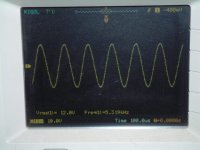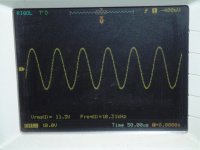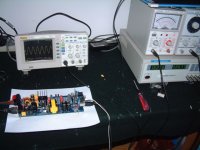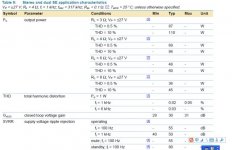Tda8920+smps aluminum case cad draw.
I have to make aluminum case for this module,My freinds asked for me .I place autocad draw here ,PDF and DXF documnet,anyone help me to make it perfect look.thanks
I have to make aluminum case for this module,My freinds asked for me .I place autocad draw here ,PDF and DXF documnet,anyone help me to make it perfect look.thanks
Attachments
I also believe TDA8920 sound better than TRIPATH IC,good low frequency,nice high frequency.but normal state need 100ma current is short.I have test many times,tda8920BJ sound better than tda8920bth.
I have some tda8920BJ ,if anyone need I can get one pcs for you as present.
I don't have a lot to compare with but I have been very happy with the sound of my ConnexElectronics TDA8920 module these last few months.. the very low heat output and power consumption also a bonus.
authxl - as you are making a separate amplifier to the ConnexElectronics module I think it deserves it's own thread so we don't confuse messages about the two, the project looks interesting!
Genius 100 Parameter upload
Burn in my Genius100(we named tda8920+smps+pcm2902) over 24hours@2*15W/4Ω.feeling warmer ahout 30℃(room temperature ahout10℃),I finaly use ±20V/7.5A supply(SMPS,90-265VAC),output voltage: 12Vrms/4Ω/0.5%THD.About 36W/CH.
Some funs asked me,NXP write parameter high in datasheet(view picture below),why you test so little,I have to tell you,at this situation,excellent sound than Tripath,because at high frequency section(5.1KHz-20KHz) will degradation if voltage higher.of course,Inductor also important,choose carefully.our aim excellent sound then more power out.
Upload oscilloscope signal wave picture.
I use this module drive two wooden box(SPL:100db/PO:150w/4Ω),Sound good.
Interesting things are PCM2902 out (16bit/44KHz)sound quality better than IBM THINKPAD notebook(24bit/96KHz) sound out.
Balance out headphone sound good,600Ω match impedance.
Burn in my Genius100(we named tda8920+smps+pcm2902) over 24hours@2*15W/4Ω.feeling warmer ahout 30℃(room temperature ahout10℃),I finaly use ±20V/7.5A supply(SMPS,90-265VAC),output voltage: 12Vrms/4Ω/0.5%THD.About 36W/CH.
Some funs asked me,NXP write parameter high in datasheet(view picture below),why you test so little,I have to tell you,at this situation,excellent sound than Tripath,because at high frequency section(5.1KHz-20KHz) will degradation if voltage higher.of course,Inductor also important,choose carefully.our aim excellent sound then more power out.
Upload oscilloscope signal wave picture.
I use this module drive two wooden box(SPL:100db/PO:150w/4Ω),Sound good.
Interesting things are PCM2902 out (16bit/44KHz)sound quality better than IBM THINKPAD notebook(24bit/96KHz) sound out.
Balance out headphone sound good,600Ω match impedance.
Attachments
Last edited:
subtle distortion on piano tones with TDA8920?
One strange thing I just noticed on my TDA8920 amp is a very faint distortion on some piano tones.. even at low volumes listening to a FLAC of Diana Krall "I've Grown Accustomed To His Face" there is a very faint "sizzle" audible on the piano notes in the first 20 seconds. Switching over to a class B amp (but keeping the rest of the gear the same) and it isn't there. Strange as on other kinds of music I haven't heard it.. just that soft piano.I don't have a lot to compare with but I have been very happy with the sound of my ConnexElectronics TDA8920 module these last few months.. the very low heat output and power consumption also a bonus.
since i was asked few times about a very compact version of the TDA8920 amplifier with on-board SMPS, i decided to make-it. here is it: Connexelectronic
it has on-board SMPS and is very compact, just 100x50x40mm including heatsink. can be powered from 110/230V mains and delivers 2x70W at 4 Ohms.
it has on-board SMPS and is very compact, just 100x50x40mm including heatsink. can be powered from 110/230V mains and delivers 2x70W at 4 Ohms.
Hi Cristi,
I see the TDA8920 SMPS can be used balanced or unbalanced. Is it also possible with the previous versions or your board (without SMPS) ?
Romain.
I see the TDA8920 SMPS can be used balanced or unbalanced. Is it also possible with the previous versions or your board (without SMPS) ?
Romain.
the previous versions of the TDA892x amplifiers can be used with BTL input if the second connection for audio signal to allow BTL input is made on the pins of the input capacitors which are connected to GND. so, need to insulate that pins from GND and use them as differential audio input together with the current signal input pins.
One strange thing I just noticed on my TDA8920 amp is a very faint distortion on some piano tones.. even at low volumes listening to a FLAC of Diana Krall "I've Grown Accustomed To His Face" there is a very faint "sizzle" audible on the piano notes in the first 20 seconds. Switching over to a class B amp (but keeping the rest of the gear the same) and it isn't there. Strange as on other kinds of music I haven't heard it.. just that soft piano.
Does it sound like crossover distortion? A buzzing at low output levels that changes in frequency as you change the amplitude of a sine input? Can you analyze it?
I'm wondering what the differences are between the TA 3020 versions (A, B, C, D)
Are there differences in sound quality?
Differences in design? (If so, what are they?)
Please elaborate!
Are there differences in sound quality?
Differences in design? (If so, what are they?)
Please elaborate!
Please follow this thread http://www.diyaudio.com/forums/connexelectronic/158602-class-t-audio-amplifiers.html where i explained the differences. mainly, i named them in the order of development, from a to d, the simplest one is v3a, then v3b which has a better layout, then v3c with speaker protection, rectifier bridge, bigger capacitors, and v3d, with BIPS on board in addition to the features of v3c.
I know that most info I can get recommend post-filter (or a combination of feedback as in ICEpower and TC electronics modules), but I also know some who have tried 892X chips, and find the sound more than satisfying - especially in the bass region. Maybe they are hifi for bass purposes? Only a test will show (for me). I will compare with Panasonic SA-XR50.
Interesting info from New Class D who actually recommends pre-filter (who or believe EVA og Lars Clausen)
NewClassD NCDX
"Pre and Post filter mode
Most Class D amplifiers operate in Post filter mode, meaning the feedback signal is taken after the output filter. This gives some advantages like frequency response is not or less dependent on the load impedance, and also in theory lower THD because the distortion of the output filter is compensated by the feedback loop. Other Class D amplifiers operate in Pre filter mode, meaning the feedback signal is taken before the output filter. This has other advantages, like the stability of the loop is not affected by capacitive loads, and the amplifier sounds more open.
NCDX offers you the possibility to chose either of these modes, as the only Class D amplifier on the market. By default it runs in Pre mode, because this usually sounds best, but you can change this simply by moving the solder bubble from the Pre pad to the Post pad. These pads are located close to the output terminals of the board. "
Hi and sorry for bumping this old thread
wanted to ask if someone could share tda8954 HSOP24 library for eagle
wanted to ask if someone could share tda8954 HSOP24 library for eagle
I know that most info I can get recommend post-filter (or a combination of feedback as in ICEpower and TC electronics modules), but I also know some who have tried 892X chips, and find the sound more than satisfying - especially in the bass region. Maybe they are hifi for bass purposes? Only a test will show (for me). I will compare with Panasonic SA-XR50.
The answwer is not so simple: "This is better than that"...
Pre-filter feedback is better for stability, because You avoid one phase shifting stage.. (Remember Nyquist diagram and criterion?).
Post-filter feedback is better if You have a non-linear element in the filter, like saturable core of the output inductance. That way, feedback is going to linearize the transfer function and compensate the non-linearity introduced by the core.
If You want the best of the both worlds, use pre-filter feedback, and air-cored inductor in the output filter. End of story...
Hm, yes, but post filter feedback may lead to instabilities with mismatched load and phase shifts and peaking with all loads... Everything is a compromise.....
These ICs use pre-filter feedback and thus they exhibit load dependent high frequency peaking, so I wouldn't consider them very "hi-fi". Otherwise, they include many interesting protections and features.
But you do it below anyway😉The answwer is not so simple: "This is better than that"...
This it what is done in Lars Clausens designs. The newest versions you can choose between pre and post filterIf You want the best of the both worlds, use pre-filter feedback, and air-cored inductor in the output filter. End of story...
How do i mode switch a 8920bj using pin 23? i need to power on the module to operating mode.
thx
thx
- Status
- Not open for further replies.
- Home
- Amplifiers
- Class D
- TDA8920 TDA8924 By Connexelectronic, Opinions Please.




